1November Today, I will analyze the relevant information regarding LoRaWAN roaming. This will be a brief introduction, and for specific technical details, please refer to the LoRaWAN protocol. LoRaWAN roaming is divided into two types: Passive Roaming and Hand-over Roaming. The LoRaWAN server consists of two parts: the Network Server (abbreviated as NS) and the Join Server (abbreviated as JS). The Network Server is responsible for data transmission and protocol implementation, while the Join Server handles network access verification and key generation when devices join the network. The following diagram illustrates the two types of roaming.
Today, I will analyze the relevant information regarding LoRaWAN roaming. This will be a brief introduction, and for specific technical details, please refer to the LoRaWAN protocol. LoRaWAN roaming is divided into two types: Passive Roaming and Hand-over Roaming. The LoRaWAN server consists of two parts: the Network Server (abbreviated as NS) and the Join Server (abbreviated as JS). The Network Server is responsible for data transmission and protocol implementation, while the Join Server handles network access verification and key generation when devices join the network. The following diagram illustrates the two types of roaming.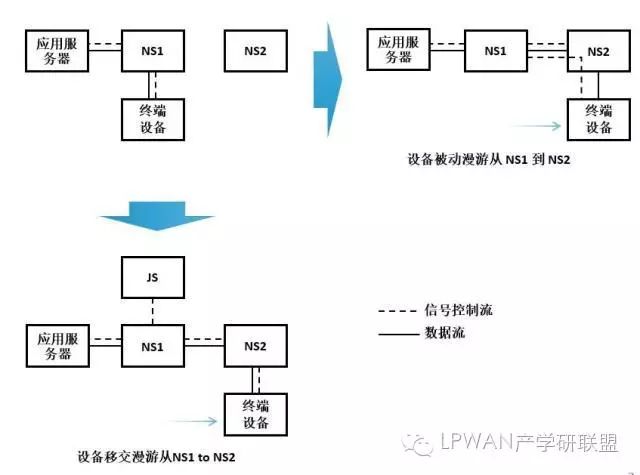 1. Passive Roaming: An uplink from a device can be received by two networks simultaneously, so the device may not even be aware that it is roaming. However, a series of LoRaWAN behaviors related to that device are still controlled and dominated by NS1.
1. Passive Roaming: An uplink from a device can be received by two networks simultaneously, so the device may not even be aware that it is roaming. However, a series of LoRaWAN behaviors related to that device are still controlled and dominated by NS1.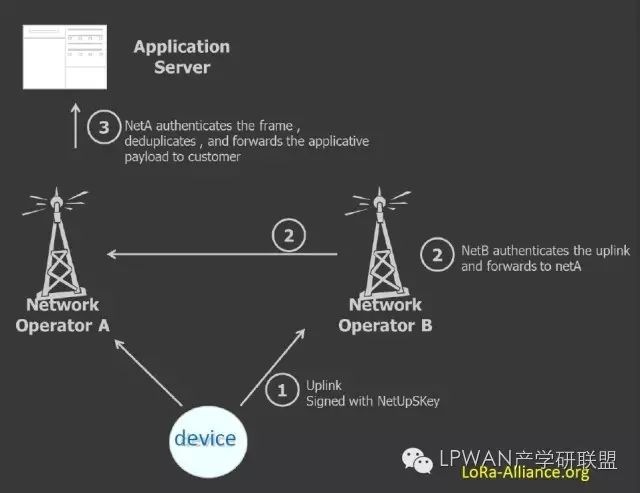 2. Hand-over Roaming: The device is handed over from one network to another, and the LoRaWAN behaviors related to that device are dominated by the new network, but the data is still transmitted by the original network.
2. Hand-over Roaming: The device is handed over from one network to another, and the LoRaWAN behaviors related to that device are dominated by the new network, but the data is still transmitted by the original network.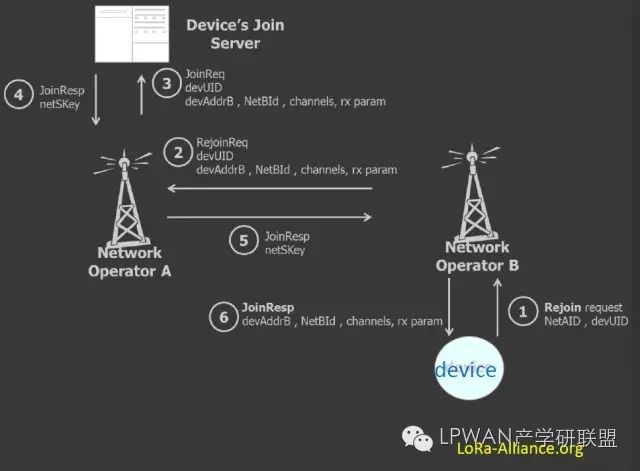 So how can roaming be achieved? For hand-over roaming, the device must periodically broadcast a special Rejoin request, which is detailed in the LoRaWAN 1.1 protocol; for passive roaming, different network session keys must be used for uplink and downlink, and a new bidirectional NetSKey is defined in 1.1 to achieve this functionality. Therefore, when an unknown device appears in a network, what must this network do? Identify which application the device belongs to; Confirm which network the device originally belonged to; Determine which keys the device has stored; Check if the device’s owner requires roaming for this device.
So how can roaming be achieved? For hand-over roaming, the device must periodically broadcast a special Rejoin request, which is detailed in the LoRaWAN 1.1 protocol; for passive roaming, different network session keys must be used for uplink and downlink, and a new bidirectional NetSKey is defined in 1.1 to achieve this functionality. Therefore, when an unknown device appears in a network, what must this network do? Identify which application the device belongs to; Confirm which network the device originally belonged to; Determine which keys the device has stored; Check if the device’s owner requires roaming for this device.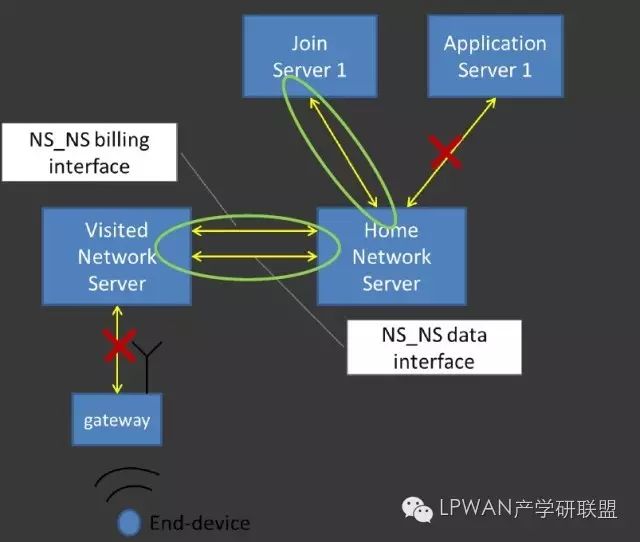 The conditions required for a device to be handed over from the original network to the current network are: interfaces between the two NS; interfaces between NS and JS; discovery mechanisms for JS. 1.1 provides detailed explanations of these, including standardized security and authentication interfaces between NS and the discovery mechanism for JS based on device AppEUI. The roaming referred to in the LoRaWAN protocol is limited to networks of the same network operator, and networks that span different network operators cannot be referred to as roaming in the LoRaWAN protocol, but it can still be achieved, and the protocol provides detailed information on this as well.
The conditions required for a device to be handed over from the original network to the current network are: interfaces between the two NS; interfaces between NS and JS; discovery mechanisms for JS. 1.1 provides detailed explanations of these, including standardized security and authentication interfaces between NS and the discovery mechanism for JS based on device AppEUI. The roaming referred to in the LoRaWAN protocol is limited to networks of the same network operator, and networks that span different network operators cannot be referred to as roaming in the LoRaWAN protocol, but it can still be achieved, and the protocol provides detailed information on this as well.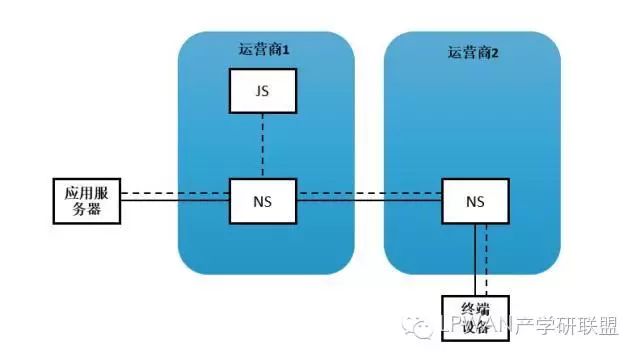 Therefore, the roaming guidelines are summarized as follows: Operator roaming parameters: NetID; enable/disable passive roaming; enable/disable hand-over roaming; other parameters. Roaming conditions for each device: DevEUI; enable/disable passive roaming; enable/disable hand-over roaming; other parameters.
Therefore, the roaming guidelines are summarized as follows: Operator roaming parameters: NetID; enable/disable passive roaming; enable/disable hand-over roaming; other parameters. Roaming conditions for each device: DevEUI; enable/disable passive roaming; enable/disable hand-over roaming; other parameters. LPWAN Industry-Academia-Research AllianceWeChat ID: LPWAN-NIOT
LPWAN Industry-Academia-Research AllianceWeChat ID: LPWAN-NIOT The Internet of Things is no longer a dream. Please long press the QR code to follow.
The Internet of Things is no longer a dream. Please long press the QR code to follow.